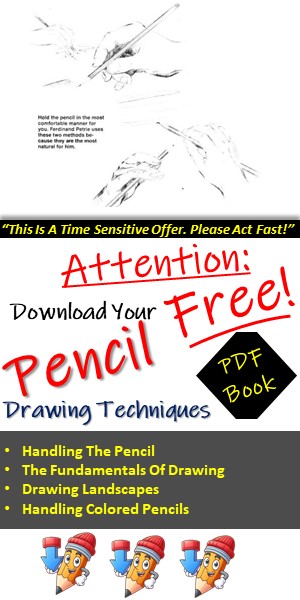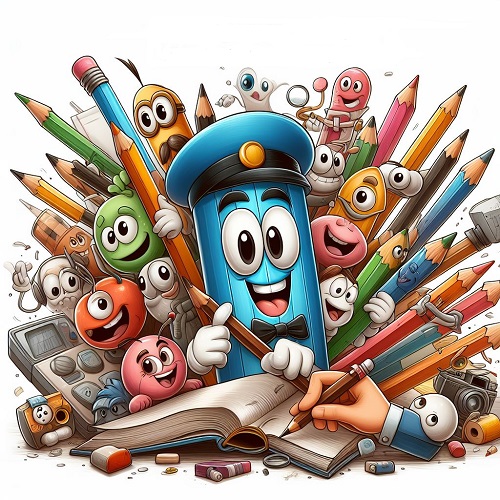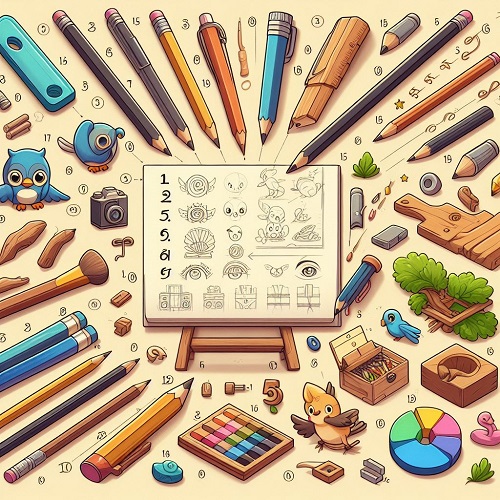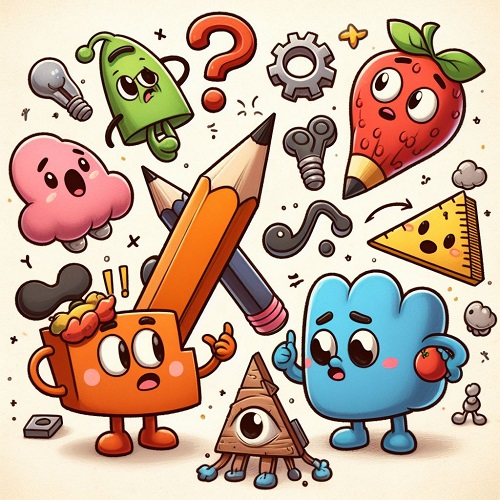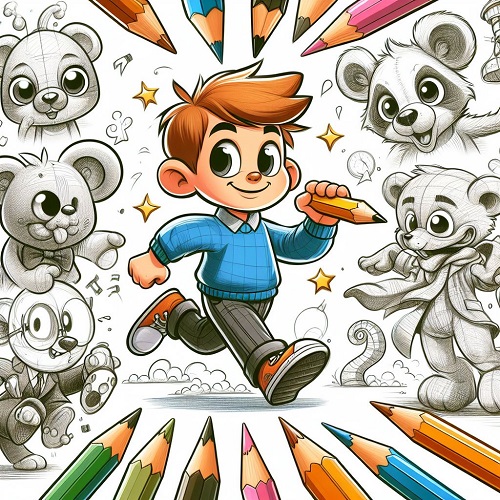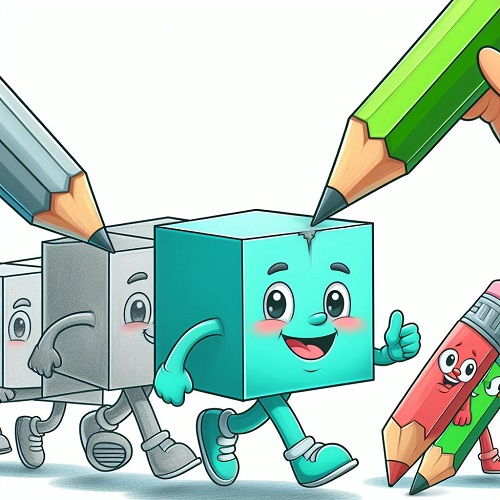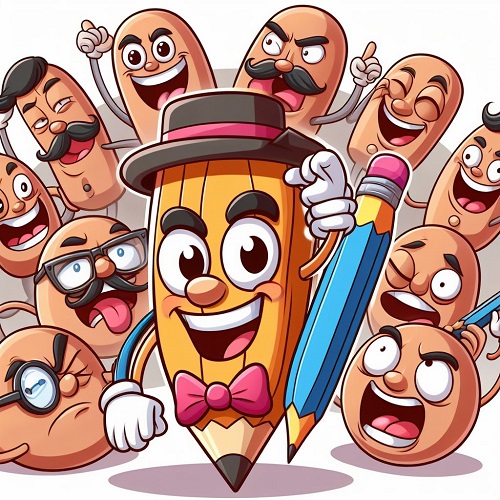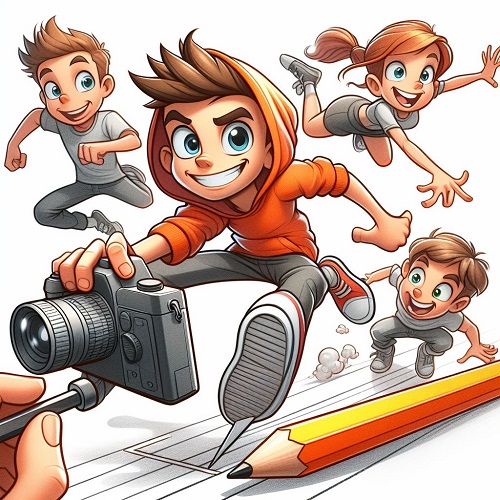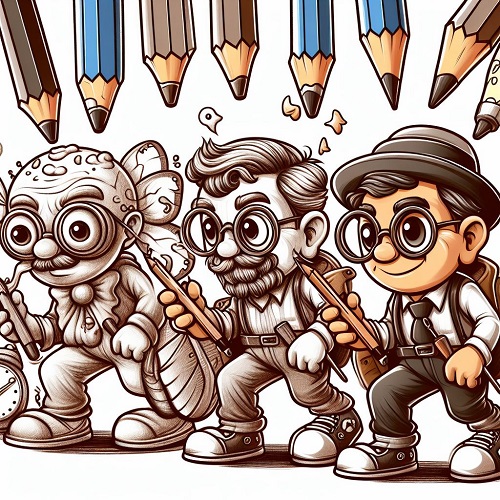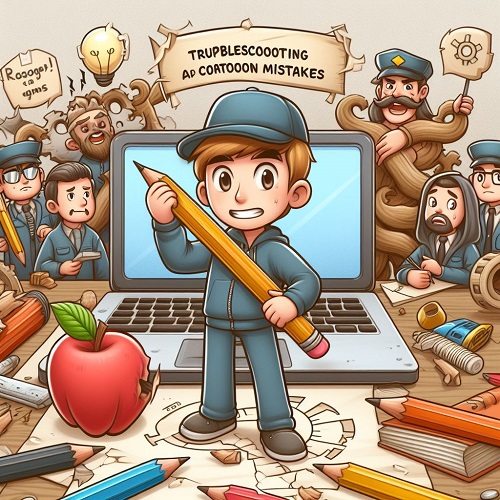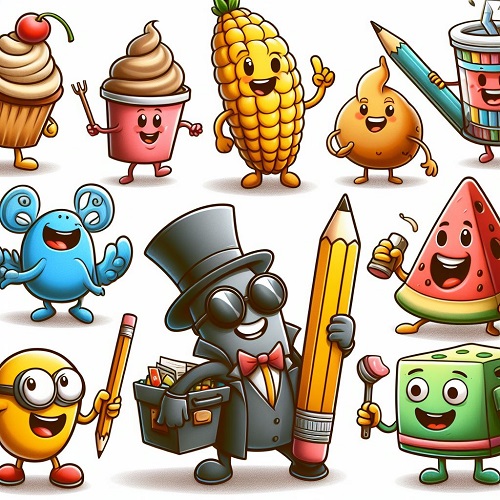Mastering the Art of Pencil Drawing Cartoon Characters: A Comprehensive Guide
In the realm of artistic expression, pencil drawings hold a unique allure, offering a timeless medium for creativity. Cartoon characters, with their whimsy and charm, serve as an enchanting canvas for artists. This in-depth guide invites you to embark on a journey, exploring the intricacies of pencil drawing and unraveling the secrets to bringing cartoon characters to life.
FAQ: Why Choose Pencil Drawing for Cartoon Characters?
Q: Why opt for pencil drawing over other mediums?
A: Pencil drawing allows for a tactile and versatile approach, providing artists with precise control and the ability to capture intricate details. It also imparts a classic, handcrafted aesthetic that resonates with the charm of cartoon characters.
I. The Basics of Pencil Drawing
Essential Tools and Materials
Before delving into the creative process, it’s crucial to understand the tools that will shape your artistic vision. The choice of pencils, paper quality, and the right erasers and sharpeners all play pivotal roles in bringing your cartoon characters to life.
FAQ: Which Pencils are Ideal for Cartoon Drawing?
Q: What pencil types should I consider for cartoon drawing?
A: Different pencil types serve varied purposes. HB pencils are excellent for initial sketches, while softer pencils like 2B to 6B are ideal for shading. Experimenting with a range of pencils will help you find the perfect balance for your style.
II. Understanding Cartoon Characters
Analyzing Anatomy and Features
Before sketching your first cartoon character, delve into the anatomy and distinctive features that define these beloved creations. Understanding the nuances of eyes, noses, mouths, and body proportions is essential for capturing the essence of cartoon characters.
FAQ: How to Approach Different Cartoon Styles?
Q: Can I apply the same techniques to various cartoon styles?
A: While fundamental principles remain consistent, each style has unique characteristics. Study Disney’s exaggerated features, the expressive eyes of anime characters, and the simplicity of classic cartoons to adapt your approach accordingly.
III. Getting Started with Pencil Sketching
Warm-up Exercises and Basic Shapes
Embarking on your artistic journey involves more than just putting pencil to paper. Warm-up exercises enhance hand-eye coordination, while mastering basic shapes lays the foundation for creating dynamic and well-proportioned cartoon characters.
FAQ: What Are Effective Warm-up Exercises?
Q: Are warm-up exercises essential, and if so, what are some effective ones?
A: Yes, warm-up exercises are crucial for enhancing precision and control. Try simple exercises like circles, straight lines, and squiggles before progressing to more complex shapes. This primes your hand for the detailed work ahead.
IV. Adding Depth and Dimension
Shading Techniques
Shading is the secret ingredient that transforms two-dimensional sketches into lifelike, three-dimensional characters. Explore the art of hatching, cross-hatching, and gradient shading, discovering how to use highlights and shadows to infuse depth into your creations.
FAQ: How Can I Master Gradient Shading?
Q: Gradient shading seems challenging; any tips for mastering it?
A: Start with a light touch and gradually increase pressure as you move from the lightest area to the darkest. Experiment with different pencil grades and practice transitioning smoothly between shades for a seamless gradient effect.
V. Perfecting Facial Expressions
Conveying Emotions through Cartoons
Facial expressions are the gateway to emotion in cartoon characters. Learn to navigate the intricacies of eyes, mouths, and brows as you follow a step-by-step guide to portraying a range of emotions, from joy and surprise to frustration and sadness.
FAQ: How to Avoid Over-exaggeration in Facial Expressions?
Q: I worry about my characters looking too exaggerated. Any tips to strike the right balance?
A: Focus on subtleties and observe real-life expressions. Small nuances in facial features can convey powerful emotions without veering into caricature territory. Practice restraint to achieve a harmonious and relatable look.
VI. Capturing Dynamic Poses
Action-packed Scenes
Cartoon characters often find themselves in dynamic poses, adding energy and narrative to your artwork. Uncover posing techniques that bring movement and life to your characters, making them leap off the page and engage your audience.
FAQ: How to Convey Motion in Static Drawings?
Q: My characters often look static. Any advice on conveying motion in a still image?
A: Experiment with foreshortening, dynamic angles, and exaggerated poses. Consider the character’s weight distribution and the direction of movement. Additionally, incorporating motion lines and implied action in the background can enhance the sense of dynamism.
VII. Enhancing Your Style
Developing a Personal Touch
Discovering your unique style is a hallmark of artistic growth. Experiment with different techniques, explore various influences, and infuse your characters with distinct features that set them apart from the crowd.
FAQ: How to Balance Influence and Originality?
Q: I’m inspired by various artists. How can I balance their influence while maintaining my originality?
A: Embrace your influences but strive to incorporate your perspective. Mix and match techniques, experiment with different styles, and let your artistic voice shine through. Over time, you’ll find a harmonious balance between inspiration and authenticity.
VIII. Troubleshooting Common Mistakes
Overcoming Proportion Issues and Creative Blocks
Even seasoned artists encounter challenges. Identify and rectify proportion issues, deal with smudging, and find inspiration to overcome creative blocks as we address common pitfalls and provide practical solutions.
FAQ: How to Avoid Overworking a Drawing?
Q: I often find myself overworking drawings. Any tips to avoid this?
A: Set clear goals for each drawing session and take breaks to gain fresh perspectives. Step away periodically and return with a discerning eye. Sometimes, less is more, and knowing when to stop can prevent overworking and maintain the vitality of your artwork.
IX. Showcasing Your Artwork
Photography Tips and Online Presence
Once your creations are ready for the spotlight, learn how to showcase them effectively. Capture your pencil drawings with finesse, build an online portfolio, and connect with the vibrant online art community to share your passion and receive valuable feedback.
FAQ: What’s the Best Way to Photograph Pencil Drawings?
Q: Photographing pencil drawings seems tricky. Any tips for capturing details without losing quality?
A: Use natural light to illuminate your drawings evenly. Avoid harsh shadows by diffusing light sources. Set your camera to a high resolution and consider using a tripod for stability. Experiment with different angles to find the best way to showcase the details of your artwork.
X. Inspirational Case Studies
Learning from the Masters
Drawing inspiration from successful artists who started their journey with pencil drawings, this section delves into their experiences, techniques, and unique approaches. Analyze their artistic evolution and draw valuable lessons from their paths to success.
FAQ: How Did Successful Artists Overcome Challenges?
Q: Artist’s face numerous challenges. How did successful artists overcome obstacles in their journey?
A: Successful artists often persevered through failures, embraced challenges as learning opportunities, and maintained a relentless passion for their craft. By learning from their resilience, aspiring artists can navigate their own artistic journey more confidently.
XI. Conclusion
Summing up this exhaustive guide, we encourage you to apply the skills you’ve acquired on this artistic odyssey. The world of pencil drawing cartoon characters is vast and teeming with endless possibilities for creative expression. As you continue to hone your craft, remember that each stroke of the pencil brings you closer to mastering the art and capturing the essence of these beloved characters.
FAQ: What’s the Next Step After Mastering Pencil Drawing?
Q: I’ve mastered pencil drawing. What’s the next step in my artistic journey?
A: Congratulations on reaching this milestone! Consider exploring other mediums, such as digital art or incorporating color into your pencil drawings. Additionally, delve into character design, storytelling, or even animation to further broaden your artistic horizons.
In closing, keep practicing, experimenting, and observing the world around you. Your journey as an artist is a continuous evolution, and every sketch is a step forward. The joy of pencil drawing cartoon characters lies not just in the finished product but in the process of creation itself.
- Mastering the Art: A Comprehensive Guide to Pokemon Pencil Drawing
- Mastering the Art of Pencil Drawing on Canvas: Your Comprehensive Guide
- Unveiling Artistry: A Comprehensive Guide to Horse Pencil Drawings
- Mastering the Art of Pencil Drawing Cartoon Characters: A Comprehensive Guide
- Unleash Your Creativity: A Comprehensive Step-by-Step Guide to Colored Pencil Drawing
- Unleashing the Depths of Creativity: A Comprehensive Guide to Octopus Pencil Drawing
- Unlocking the Artistry: A Deep Dive into Black Pencil Drawing
- Mastering the Art of Tree Pencil Drawing: A Step-by-Step Guide for Aspiring Artists
- Dive into Creativity: The Magic of Underwater Pencil Drawing
- Unleashing Creativity: Mastering the Art of 2B Pencil Drawing
